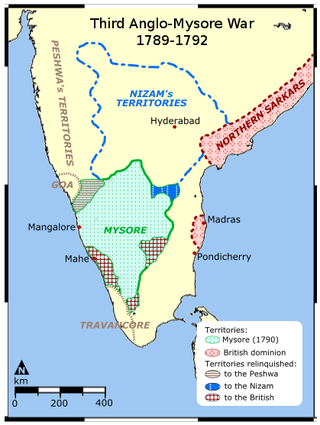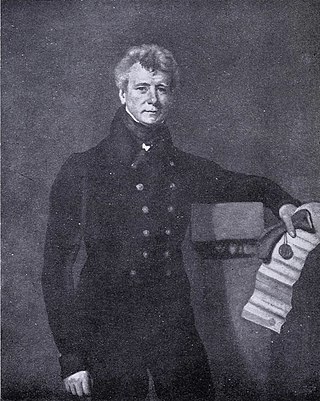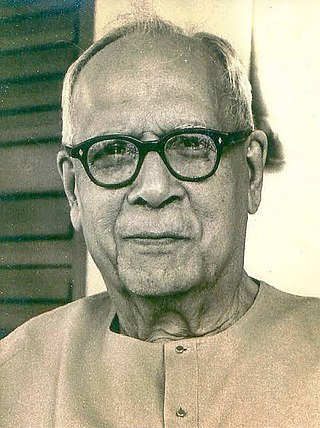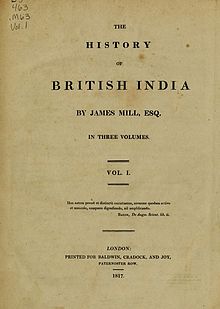
James Mill was a Scottish historian, economist, political theorist, and philosopher. He is counted among the founders of the Ricardian school of economics. He also wrote The History of British India (1817) and was one of the prominent historians to take a colonial approach. He was the first writer to divide Indian history into three parts: Hindu, Muslim and British, a classification which has proved surpassingly influential in the field of Indian historical studies.

Sir John William Kaye was a British military historian, civil servant and army officer. His major works on military history include a three-volume work on The History of the Sepoy War in India. This work was revised later by George Bruce Malleson and published in six volumes in 1890 as Kaye and Malleson's History of the Indian Mutiny.

Horace Hayman Wilson was an English orientalist who was elected the first Boden Professor of Sanskrit at Oxford University.

Lieutenant-Colonel James Tod was an officer of the British East India Company and an Oriental scholar. He combined his official role and his amateur interests to create a series of works about the history and geography of India, and in particular the area then known as Rajputana that corresponds to the present day state of Rajasthan, and which Tod referred to as Rajast'han.

The Third Anglo-Mysore War (1790–1792) was a conflict in South India between the Kingdom of Mysore and the British East India Company, the Kingdom of Travancore, the Maratha Empire, and the Nizam of Hyderabad. It was the third of four Anglo-Mysore Wars.

James Prinsep FRS was an English scholar, orientalist and antiquary. He was the founding editor of the Journal of the Asiatic Society of Bengal and is best remembered for deciphering the Kharosthi and Brahmi scripts of ancient India. He studied, documented and illustrated many aspects of numismatics, metallurgy, meteorology apart from pursuing his career in India as an assay master at the mint in Benares.

Sir Walter Elliot, KCSI was a British civil servant in colonial India. He was also an eminent orientalist, linguist, archaeologist, naturalist and ethnologist who worked mainly in the Presidency of Madras. Born in Edinburgh, he studied at the East India Company College at Haileybury and joined the East India Company's civil service at Madras in 1820 and worked on until 1860. He was invested Knight Commander of the Order of the Star of India (KCSI) in 1866.

James Grant Duff was a British soldier and historian from Scotland, who was active in British India.
The History of India, as Told by Its Own Historians is a book comprising translations of medieval Persian chronicles based on the work of Henry Miers Elliot. It was originally published as a set of eight volumes between 1867-1877 in London. The translations were in part overseen by Elliot, whose efforts were then extended and edited posthumously by John Dowson.

Ramesh Chandra Majumdar was a historian and professor of Indian history. Majumdar is a noted historian of modern India. He was a former Sheriff of Kolkata.

Sir Jadunath Sarkar, was a prominent Indian historian and a specialist on the Mughal dynasty.

The British Raj was the rule of the British Crown on the Indian subcontinent; it is also called Crown rule in India, or Direct rule in India, and lasted from 1858 to 1947. The Indian Rebellion of 1857 led to the British Crown assuming direct control of India from the East India Company in the form of the new British Raj through the Government of India Act 1858. The region under British control was commonly called India in contemporaneous usage and included areas directly administered by the United Kingdom, which were collectively called British India, and areas ruled by indigenous rulers, but under British paramountcy, called the princely states. The region was sometimes called the Indian Empire, though not officially.

Jalandhar district is a district in Doaba region of the state of Punjab, India. The district headquarters is the city of Jalandhar.

John Borthwick Gilchrist was a Scottish surgeon, linguist, philologist and Indologist. Born and educated in Edinburgh, he spent most of his early career in India, where he made a study of the local languages. In later life, he returned to Britain and lived in Edinburgh and London. In his final years, he moved to Paris, where he died at the age of 81.

British General Charles Cornwallis, the Earl Cornwallis, was appointed in February 1786 to serve as both Commander-in-Chief of British India and Governor of the Presidency of Fort William, also known as the Bengal Presidency. He oversaw the consolidation of British control over much of peninsular India, setting the stage for the British Raj. He was also instrumental in enacting administrative and legal reforms that fundamentally altered civil administration and land management practices there. According to historian Jerry Dupont, Cornwallis was responsible for "laying the foundation for British rule throughout India and setting standards for the services, courts, and revenue collection that remained remarkably unaltered almost to the end of the British era."

This is a bibliography of notable works about India.
James Talboys Wheeler was a bureaucrat-historian of the British Raj.
The Cambridge History of India was a major work of historical scholarship published in five volumes between 1922 and 1937 by Cambridge University Press. Some volumes were also part of The Cambridge History of the British Empire. Production of the work was slowed by the First World War and the ill health of contributors, and Volume II was eventually abandoned.

Henry George Keene was an English historian of medieval and modern India.

Râs Mâlâ: Hindoo Annals of the Province of Goozerat, in Western India is a 1856 historical work by British colonial administrator Alexander Kinloch Forbes. Divided in two volumes, the work has four sections documenting the history and chronicles from 8th century Gujarat to arrival of British and folk literature of Gujarat as well as an historical account of the place and people he came to know during his stay in Gujarat. It was later translated into Gujarati in 1869.

















